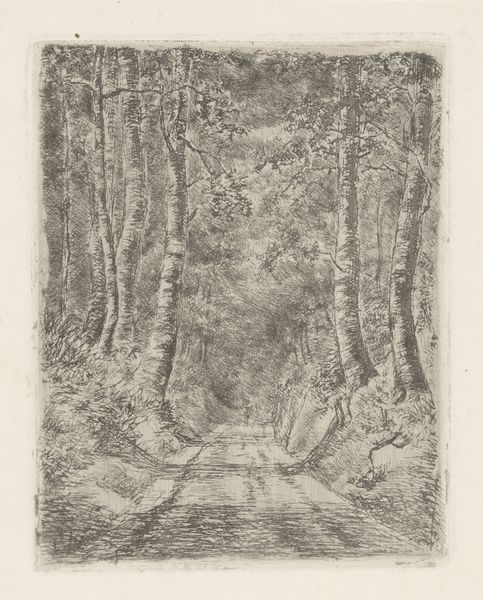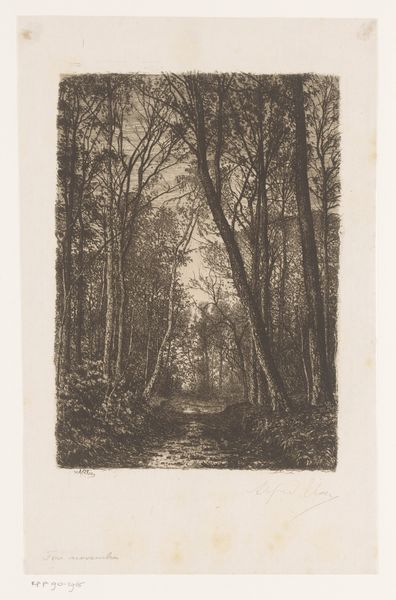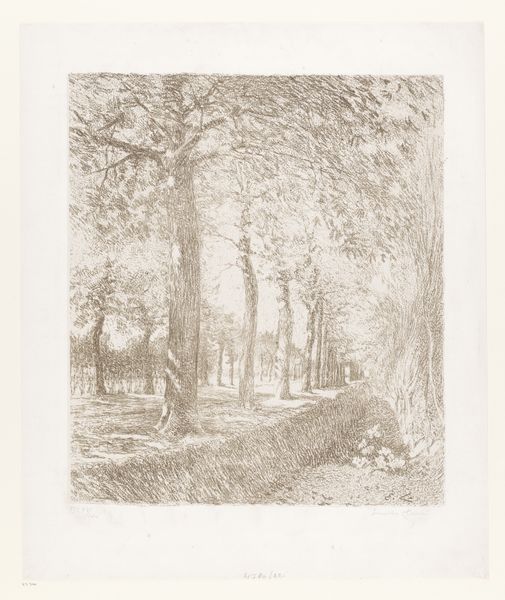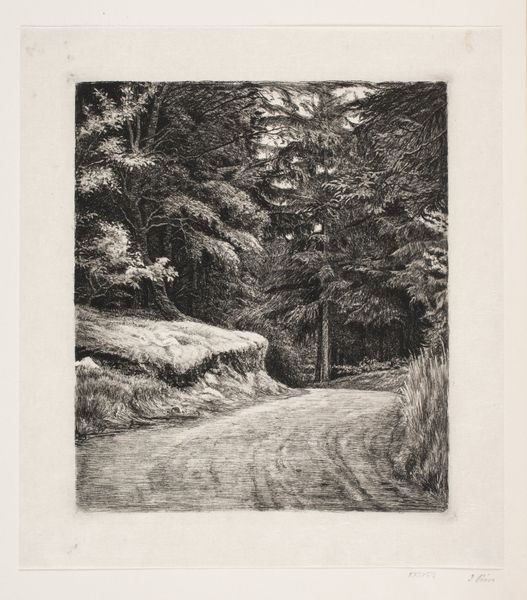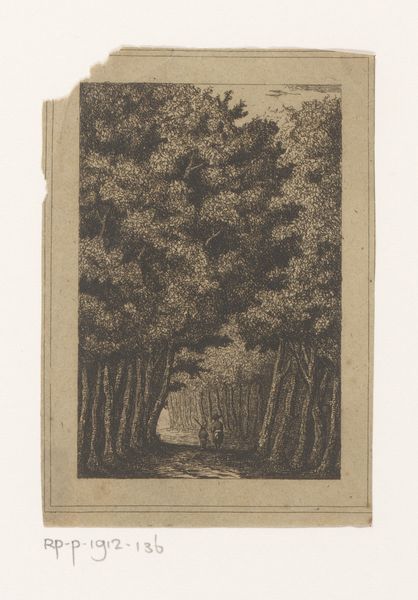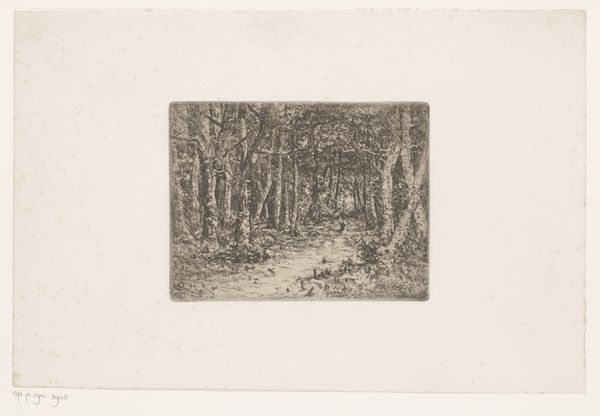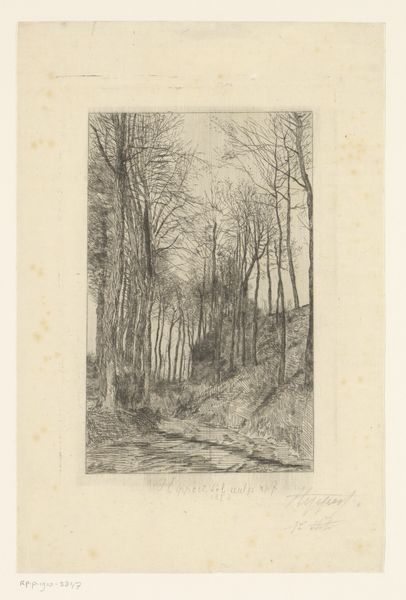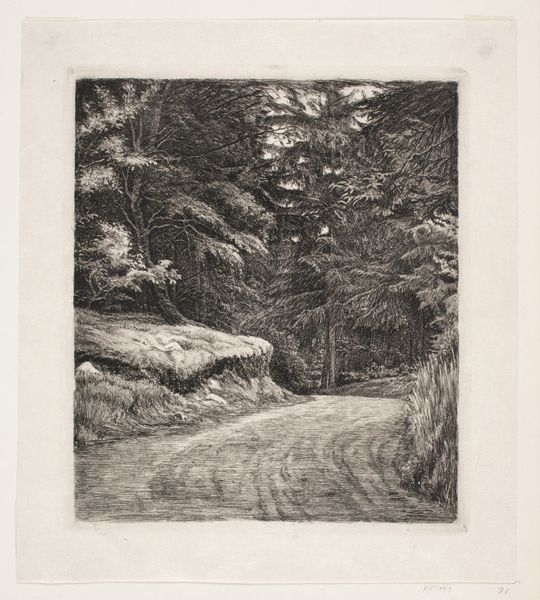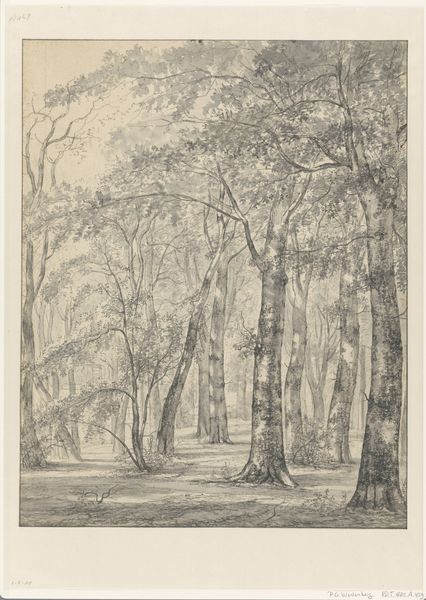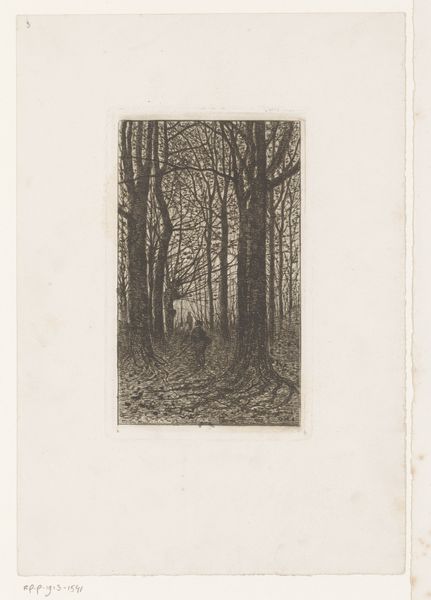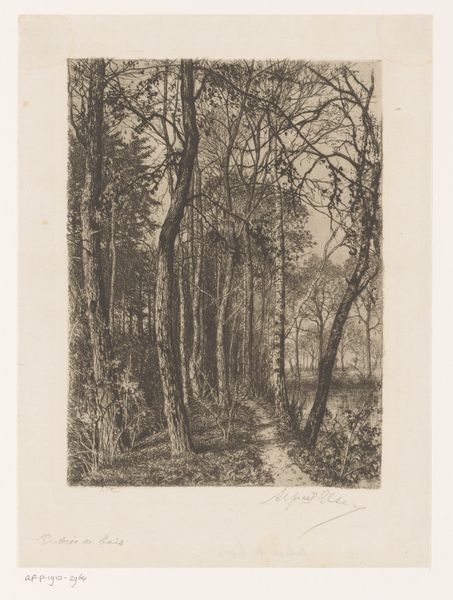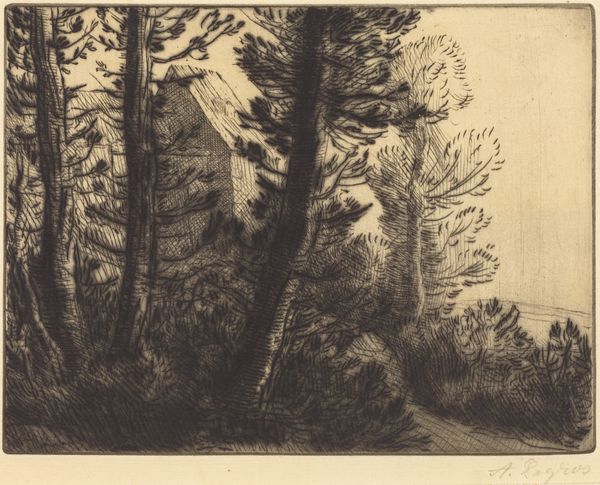
print, etching
#
dutch-golden-age
# print
#
etching
#
landscape
#
line
#
realism
Dimensions: height 135 mm, width 108 mm
Copyright: Rijks Museum: Open Domain
Editor: Here we have Marie van der Goes van Dirxland's etching, "Bos langs een holle weg," created sometime between 1854 and 1878. It’s quite delicate, with very fine lines. How do you interpret this piece, considering its focus on landscape? Curator: I'm particularly drawn to the materiality of this work. It’s an etching, a printmaking technique that relies on acid to corrode the unprotected parts of a metal surface. This suggests a deliberate process, involving specific labor. Think about the artist meticulously preparing the plate, applying the acid... the entire manufacturing effort contrasts with the supposed ease of “natural” depiction. The forest isn't just scenery here; it's the result of production. How does that interplay of labor and landscape strike you? Editor: I never considered it that way! I was just thinking about how peaceful it seemed. But now, I realize the image wouldn't exist without the physical and skillful actions of the artist manipulating these materials. It bridges art and craft. Curator: Exactly. And how does that blending challenge established hierarchies? Before the modern era, "fine art," was about "ideals". Now it's something people are *making*. So, what's the relationship between the “realism” here and its making? Is this really just nature, or is it actually labour on display? Editor: That makes me see the print in a completely different way. The labour of etching is as present as the image it makes possible. Thanks so much. Curator: My pleasure! Considering artistic outputs as a whole changes how we interpret and experience art history.
Comments
No comments
Be the first to comment and join the conversation on the ultimate creative platform.
